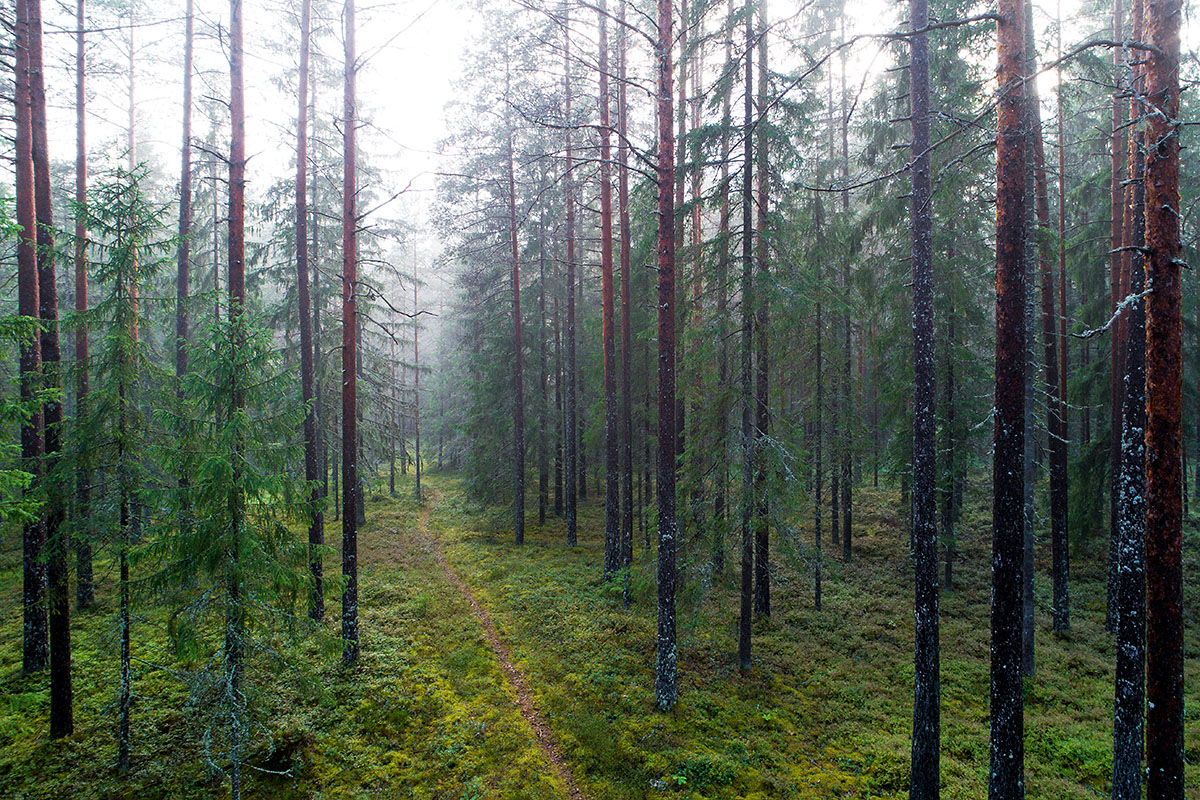Today, in addition to providing economic benefits, the forest is also seen as a carrier of cultural function
Estonians have been tied to the forest throughout our history and it also forms a part of our culture. According to the classical theory of the origin of the Finno-Ugric peoples, the ancestors of Estonians have also spent millennia moving from the forest zone of the Urals to the Baltic coast. The forest has been the natural environment of our ancestors and shaped the character and habits of the people. It is believed that these millennia have developed different characteristics in Estonians as well as in other Finno-Ugric peoples. The forest has made the people who lived there alert and attentive, increased their perception and understanding of differences. At the same time, the forest environment may have made people introverted, melancholic, and fearful of the public.

The forest has certainly played an important role in the lives of people living in Estonia since the Stone Age. After the ice age, the Estonian tundra-like vegetation was replaced by forests, and primitive hunters often travelled the forests in search of prey. The nature-based religion saw the forest as a living organism with powers. Later, the forest was associated with the fairies living there, with whom it was necessary to communicate while going to the forest to not get into an accident [1]. When people stopped actively travelling, slash-and-burn fields were established instead of forests – trees were cut down, burned, and seeds were sown in the ash or the ashy soil. In Estonia, slash-and-burn was the predominant method of agriculture until the seventeenth century; in Southern Estonia, this tradition lasted until the nineteenth and even the beginning of the twentieth century.
With the increase of settlements and the concentration of people in the villages, the forest became more distant, foreign, and even more dangerous for the people, but during the wars, it also provided a refuge from the enemy. The forest provided protection from the lords of the manor, the church, the state, and foreign conquerors in our earlier history as well as in the twentieth century. In the nineteenth century, the term ‘forest brother’ was introduced to refer to people who had fled to the forest to hide from various dangers [2].
As the population increased, people began to consume more and more timber. In the second half of the eighteenth century, a large amount of forest was cut down for the vodka industry of the manors; in the paper industry, timber began to be used as a raw material in the second half of the nineteenth century. During the Soviet era, when the forest was managed by forest holdings and forestry plants, as well as collective farms and state farms, the forest was treated with tractors and chainsaws. Extensive drainage of forests also began. The collection of medicinal plants from the forests was also continued, and berries were picked to such a degree that it was necessary to establish forbidden periods for berry picking. Even today, picking mushrooms and berries is popular in Estonia, and a good site is kept as a family secret.
In addition to providing economic benefits, the forest is now seen as a carrier of cultural function – for Estonians, the forest is important and forest motifs are used in film, painting, music, and literature.
The subject of forests has provided a theme from several perspectives. When the Soviet era brought about the need to protect the forest, writers created nature conservationists like Kunksmoor (Old Mother Kunks) and Naksitrallid (the Three Jolly Fellows) [3]. Today, however, the forest is a common cultural motif in literature (for example, in the works of Valdur Mikita), which is also compared to the church (for example, in the portrait movie of Fred Jüssi) – a forest as a sanctuary that should be treated with great authority.
The forest or the objects located there were already considered sacred by the ancient Estonians. A very important cultural aspect are the natural sacred sites in the forest – sacred groves, sacred trees, springs, sacrificial stones, sacrificial gardens, cross forests. It is a multi-layered and complex cultural heritage with aspects of both natural as well as material and spiritual culture. It has historical, archaeological, religious, folklore-related, ethnological, and environmental value.
The cultural values of forests have been clarified during the inventory of cultural heritage objects that started in 2006 [4].
Last modified: 05.11.2021
____________________________________
[1] https://et.wikipedia.org/wiki/Metsavennad
[2] T. Lees. Kuidas paistab mets lastekirjanduse aknast? Õpetajate leht, 05/2014.
[3] L. Tarang jt. Väike pärandkultuuri käsiraamat. Tartu: Eesti loodusfoto, 2007.